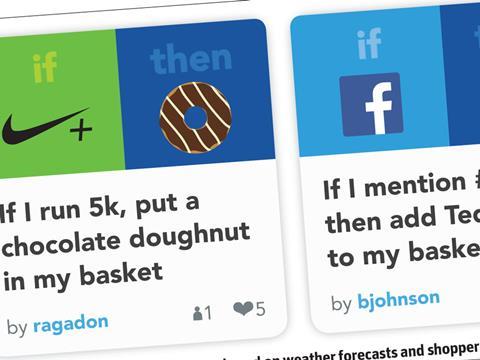
If x then y is a concept we all recognise. But in the divided ecosystem of the internet, this simple concept of one action driving another has proven a little more challenging to enact.
Put simply, it’s difficult to make internet sites “talk” to each other. Most are built in different ways and don’t enable simple integration - leading to unnecessary complication.
Say I want to order food for a barbecue at the weekend, but I’m not sure if the weather will behave. I would have to regularly check the online weather forecast and, when I feel it’s close enough to be accurate, go to a supermarket or supermarket website, find the item, put it in my basket, and complete the purchase. It’s laboured, when you think about it. Similarly, if I’m looking to buy an item but won’t go above a certain price, it’s up to me to check and re-check to see if the price has fallen.
Tesco hopes to use available third-party technology to make the process simpler. This week it became the first British supermarket to partner with IFTTT (If This Then That), an internet service that connects apps with each other. IFTTT works like this. If certain conditions are met on one service, it will trigger a response on another. So in the above barbecue dilemma, I could tell IFTTT to create a ‘recipe’ - as it dubs them - that monitors the weather. If the temperature or conditions hit a certain “trigger” (like sun) it can add burgers to my Tesco basket.
“Tesco will learn the real patterns of usage, which they can use to consider new services”
Nick Lansley, Lansley Consultancy
Tesco has created its own suggested recipes for maximum ease. These vary from useful price alerts, such as add Châteauneuf-du-Pape to my basket if it falls below a certain price, to the more whimsical, such as adding an entire Victoria sponge cake to a shopper’s basket when they hit their daily exercise targets.
Limited appeal
IFTTT’s user figures are a closely guarded secret, so it is difficult to discern how many people will actually use the Tesco channel. There are millions of user-created recipes - suggesting high levels of engagement - but the techy nature of the platform and some of the language it uses means the initial impact will be limited, believes Nick Lansley, director at Lansley Consultancy and former head of innovation at Tesco Labs. IFTTT “is not suitable for everyone: it could either be “virally successful” or fail to catch on at all.” That said, the insights gained will prove valuable. “Tesco will learn the real patterns of usage, which they can use to consider new services,” he adds.
Angela Maurer, head of Tesco Labs, agrees the emphasis is on potential customer insights.
“We are really interested to see what ideas our customers might come up with to help make their shopping experience more convenient”
Angela Maurer, Tesco Labs
“We’re hoping to learn more about how our customers want to use it and how it can help them to shop more conveniently before we decide to do any more with it,” she says. “IFTTT is one of the leading IoT (internet of things) platforms and allows any number of devices/buttons/applications to connect with our service without Tesco having to create bespoke integrations & partnerships.”
Put simply, Tesco is hoping to use this as a starting point to open up sector innovation to the crowd and to the tech-minded people that use the IFTTT platform. With access like this, innovation in the digital field will, hopefully, come easily.
“Essentially it’s an Open Innovation platform and we’re excited about seeing how people may use it to help with their regular shops.
“We are really interested to see what ideas our customers might come up with to help make their shopping experience more convenient,” she explains. For her, the venture is “an experiment” and Tesco is certainly a pioneer in this area.
If Amazon, then Tesco
One recent action that might have caused this Tesco move is the launch of Amazon Dash, an internet-connected button that orders a particular item to be delivered to your house when pressed. Say you put a load of laundry on and realise you’re about to run out of detergent; a simple press of the branded detergent Amazon Dash button attached to your washing machine would instantly re-order the product to be delivered to your house, with no further steps required. The initiative seems to have resonated with consumers. Amazon revealed that between 300,000 and 500,000 buttons had been delivered within the first three months of its launch.
IFTTT could tap into the same consumer appetite for convenience. Steve Rivers, founder of automated technology company Intelligent Reach, says Tesco’s partnership with IFTTT could create “real pockets of value” for time-poor consumers. “You could automatically order milk on the right frequency and volume to ensure you never run out of milk again,” he points out. Rivers believes Tesco has capitalised on a trend: this type of time-saving technology will arise “more and more”.
Rather than create a Tesco Dash button, Tesco have essentially given consumers the power to create their own internet-connected physical buttons. This gives shoppers greater freedom to make the button order a product they want, as all Amazon Dash buttons are branded and irreversibly linked to a particular brand. But if consumers do show an appetite for the freedoms IFTTT gives them in relation to their shopping, then Tesco is ideally positioned.







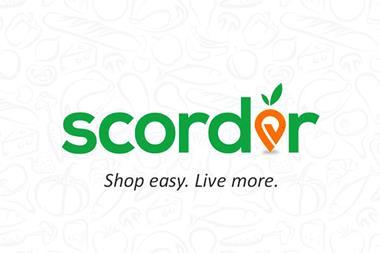
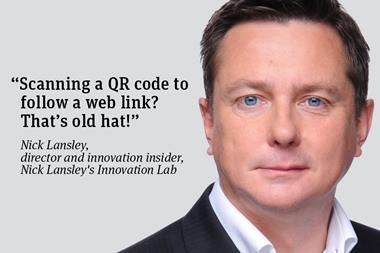
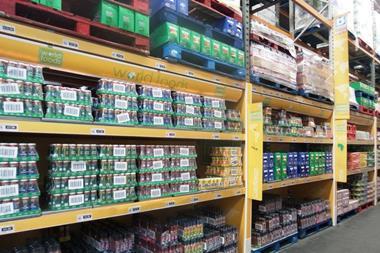

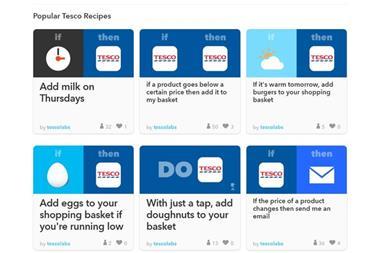
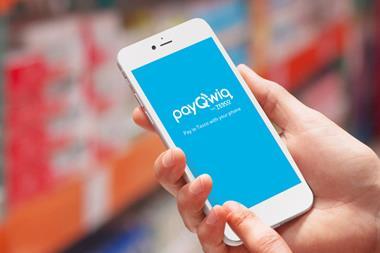






No comments yet